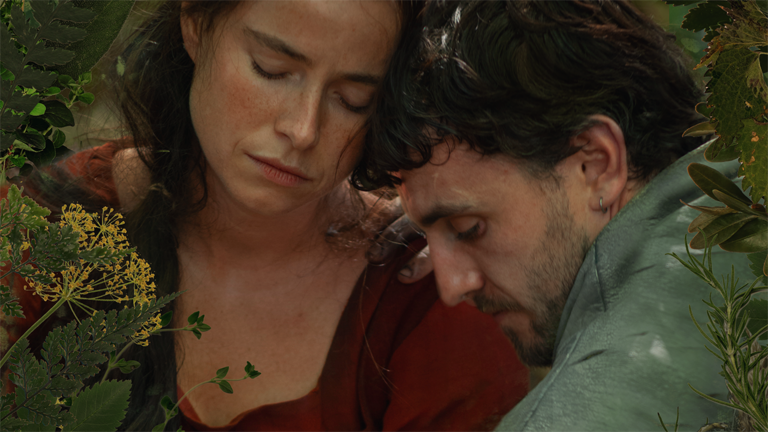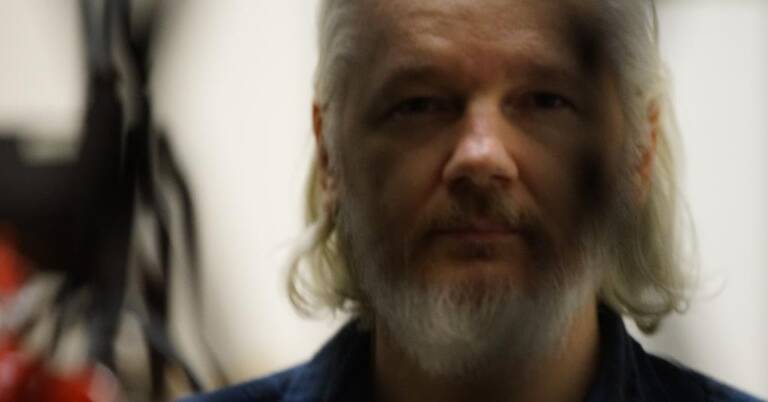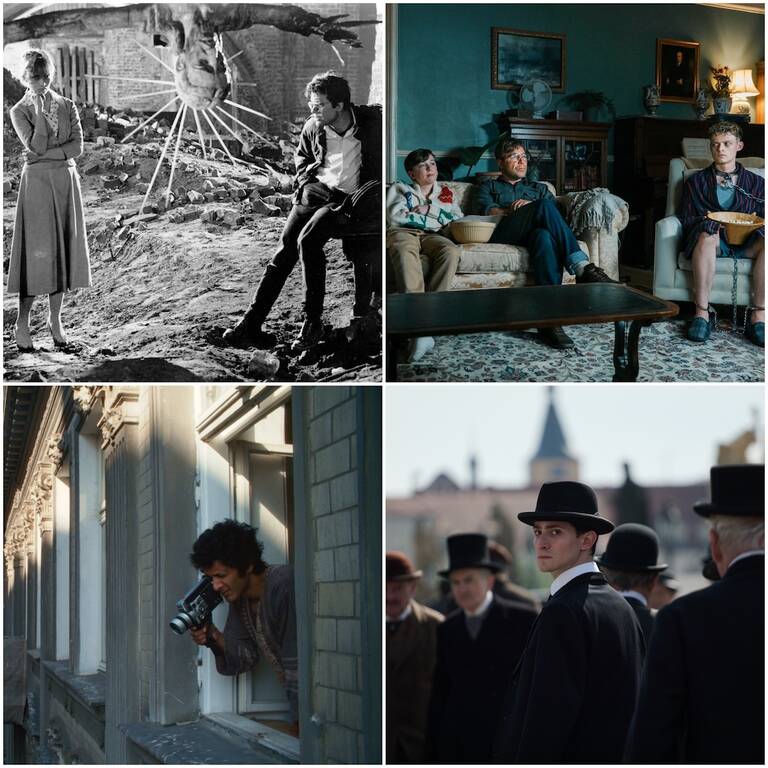
Dir Marianne Elliott UK, 2024
Cast: Gillian Anderson, Jason Isaacs, James Lance
Review by Matthew Morlai Kamara
I remember one spot in particular, where I had to conquer a lifelong fear of heights, inching across a narrow path that overlooked a sheer drop into crashing waves. It was terrifying, thrilling, and unforgettable. So when I watched The Salt Path, it hit me harder than I expected. I’ve stood on those same trails. I’ve felt the power of that coastline. And now, I’ve seen it brought to life in a film that captures both its raw beauty and its spiritual significance.
Directed with quiet strength by Marianne Elliott and based on Raynor Winn’s bestselling memoir, The Salt Path tells the deeply personal true story of Raynor and Moth — a middle-aged couple whose world crumbles overnight. Played with aching vulnerability by Gillian Anderson and Jason Isaacs, they face the kind of devastation most of us fear: a brutal financial collapse, an unfair eviction, and the devastating diagnosis of Moth’s degenerative illness. With nowhere to live and no clear plan, they decide to walk — not just away from their problems, but towards something bigger: the entire 630-mile South West Coast Path.
That’s the premise, but the journey is where the power lies. With every step along the coast, the couple grapples with grief, survival, and rediscovery. They face sleepless nights under leaking tarps, aching joints, and the cruelty of strangers who see them as “homeless” and less-than. But they also encounter moments of wonder — seals gliding through ocean swells, starlit skies above moorlands, and the unexpected kindness of fellow walkers.
The film does a brilliant job of contrasting hardship with healing. The landscape becomes a character in itself — captured with stunning precision by cinematographer Robbie Ryan, who paints each stretch of coast with golden light and vast, windswept melancholy. You can almost taste the sea air and feel the ache in your legs after a long day’s trek. There’s something deeply primal and therapeutic about watching Ray and Moth make this journey — one that feels as much spiritual as it is physical.
Gillian Anderson delivers one of her most grounded performances yet. As Ray, she carries the emotional burden of the story — desperate to stay strong for her husband, yet breaking inside from loss and uncertainty. Jason Isaacs, too, is remarkable as Moth — quietly stubborn, warm, and often dryly funny even as his body begins to betray him. Their chemistry is both lived-in and luminous; you believe in their love, in their decades together, and in the way they weather these storms — literally and emotionally.
The screenplay, adapted by Rebecca Lenkiewicz, doesn’t overdramatise the story. It respects the intimacy of Raynor’s original words and lets the drama emerge naturally — from looks, silences, and landscapes. The pacing is gentle but never plodding; it mirrors the rhythm of the walk itself: one foot after the other, breath by breath, mile by mile.
There’s a scene in which Ray, standing atop a cliff in Cornwall, lets the wind wash over her as tears stream down her face. It’s not a breakdown. It’s a breakthrough. And it’s the kind of moment The Salt Path does so well — honest, quiet, unshowy, but absolutely gut-punching.
If there’s one standout element that elevates the film further, it’s its ability to universalise a deeply personal story. You don’t need to have walked those same paths to feel the ache and inspiration of the journey. But for those of us who have — who’ve stood on the same blustery edges, peered down into sea foam far below, or trudged up steep trails with a nervous heart — there’s an added layer of resonance. This isn’t just a film about walking. It’s about moving forward when everything else falls apart.
And personally, I can’t wait to walk those paths again. This time, I’ll wear a newer pair of boots, but I’ll carry the same sense of awe. The last time I did the route, my boots held up — just about — but my nerves were frayed by the more dangerous sections. Still, like Ray and Moth, I came out the other side feeling something shift in my soul. The Salt Path brought all of that rushing back.
In its final moments, the film doesn’t offer easy answers or forced triumphs. It simply reminds us that we are all walking — some on more uneven terrain than others. It’s a rare gem of a film — quietly powerful, emotionally rich, and visually stunning, telling a true story without fanfare, leaning into vulnerability instead of melodrama, and emerging as something deeply moving. Anderson and Isaacs are pitch-perfect, and the film’s cinematography deserves awards buzz. For me, the personal connection only deepened the impact, but this is a film that will speak to anyone who’s ever lost something — and found a part of themselves in the process.
A film to walk with. A film to carry in your heart!






